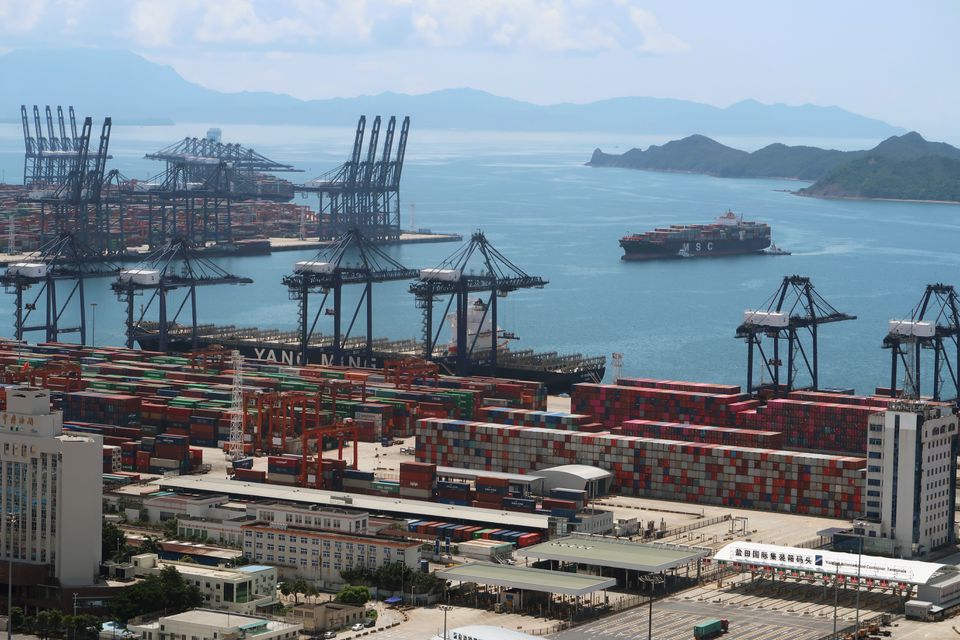BEIJING, June 9 (Reuters) – China’s exports grew at a double-digit pace in May, shattering expectations in an encouraging sign for the world’s second biggest economy, as factories restarted and logistics snags eased after authorities relaxed some COVID curbs in Shanghai.
Imports also expanded for the first time in three months, providing welcome relief to Chinese policy makers as they try to chart an economic path out of the supply-side shock that has rocked global trade and financial markets in recent months.
Nonetheless, the outlook for China’s exports, closely watched by investors as a gauge of world economic health, still points to risks from a months-long Ukraine war and rising raw material costs. Those same factors, along with rising interest rates in the United States and Europe, have raised concerns about a global recession.
Outbound shipments in May jumped 16.9% from a year earlier, the fastest growth since January this year, and more than double analysts’ expectations for a 8.0% rise. Exports were up 3.9% in April.
“We believe this recovery can continue if there are no further lockdowns,” said Iris Pang, Greater China chief economist at ING, adding the rebound in both exports and imports was mainly due to the port recovery in Shanghai in the last week of May.
Official data showed the daily container throughput at Shanghai port, which was running at severely reduced capacity in April, returned to 95.3% of the normal level in late May.
“If global demand continues to be as strong as it has been since 2021, China’s exports should maintain an average annual growth rate of 15%, at least through 3Q22,” Pang said.
Economic activity cooled sharply in April as the country grappled with the worst COVID-19 outbreak since 2020. Stringent lockdown measures, sometimes excessively enforced by local officials, had clogged highways and ports, stranded workers and shut factories.
To stabilise the situation in a politically sensitive year, the State Council has called on local officials to revive supply chains, restore economic growth and rein in unemployment. Major automakers have been able to ramp up production in May and cargo handling capacity at ports and airports are returning closer to pre-lockdown level.
NOT OUT OF WOODS YET
Electric car maker Tesla (TSLA.O) reopened its factory in Shanghai on April 19 after a 22-day stoppage, shipped the first batch of exports in early May and returned to pre-lockdown production levels in late May.
Official and private surveys showed China’s factory activity contracted at a slower pace in May as COVID-19 curbs in major manufacturing hubs eased, with a gauge on export orders improving.
The United States is considering removing some of the tariffs imposed on Chinse goods to help alleviate mounting inflationary pressures, which would be a boon for Chinese exporters.
Thursday’s data showed imports rose 4.1% in May from a year earlier, the first gain in three months, driven by easing logistics bottlenecks and imports of raw materials and intermediate goods as domestic production resumed.
That compared with flat growth in April and forecasts of a 2.0% rise.
Zheng Houcheng, director of the Yingda Securities Research Institute, said imports, although beating forecasts, still reflected sluggish domestic demand.
China posted a trade surplus of $78.76 billion last month, versus a forecast for a $58 billion surplus in the poll. The country reported a $51.12 billion surplus in April.
China’s cabinet recently announced a broad package of economic support measures, although analysts say the official GDP target of around 5.5% for this year will be hard to achieve without doing away with the zero-COVID strategy.
The central bank in May cut its benchmark reference rate for mortgages by an unexpectedly wide margin, its second reduction this year as Beijing seeks to revive the ailing housing sector to prop up the economy.
Chang Ran, a senior analyst at Zhixin Investment Research Institute, said the recent depreciation in the Chinese currency would also aid exports and help improve corporate earnings.
“However, after the bounce-back in May and June, the pressures facing exports are set to intensify in the second half this year due to base effects, high running global inflation and the policy tightening in major economies.”











